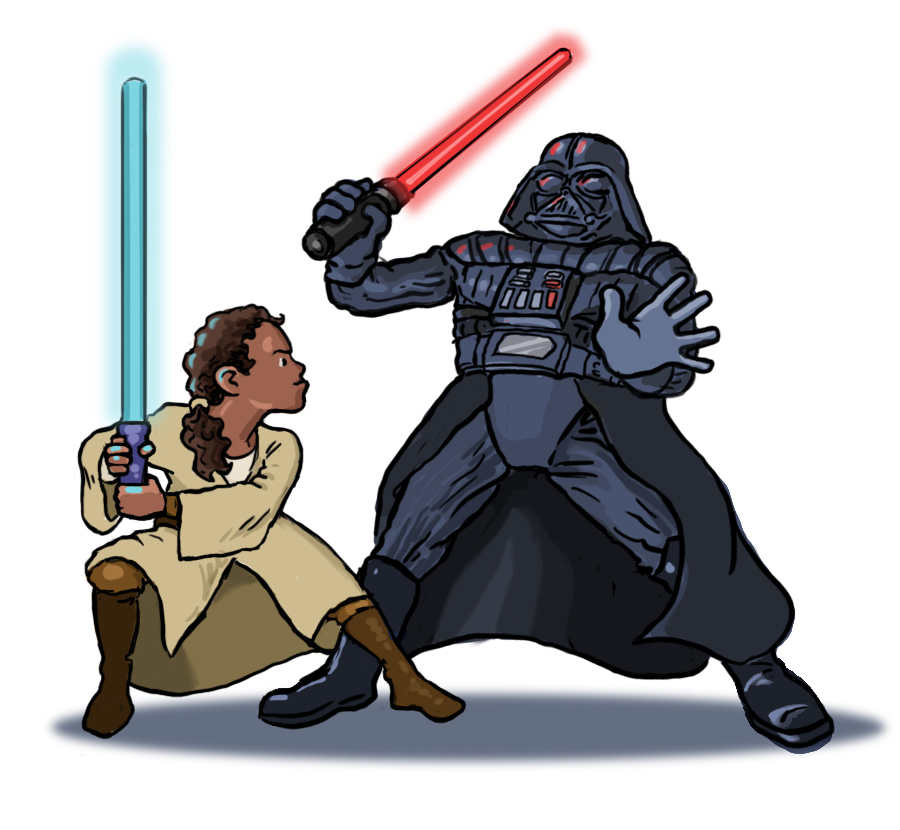Why is Mickey Mouse Still Alive?
While I start off with the title “Why Marketing Will Be Dead in Less Than 10 Years,” let’s skip back to one of the world’s most iconic successes in marketing: Mickey. Sure, as a fictional character he is much more resilient than we mortals. But still, how is it possible that 91 years after his introduction to the world in Walt Disney’s Steamboat Willie, that Mickey Mouse remains as popular as ever?
Snoopy? He had his prime, but his fame has been waning. Yogi Bear? Always funny, but rarely seen anymore. The Flintstones, Garfield, Tom & Jerry, Bugs Bunny? All incredible works of animation that at one point or another were at the zenith of pop culture and entertainment, yet today have all but disappeared from the spotlight.
Yet our friend Mickey keeps on ticking. He was the first animated character to get a star on the Hollywood Walk of Fame. He’s a multi-time presenter (and many time award recipient) at the Oscars. His face is a familiar outline on everything from grandma’s earrings to rebellious streetwear, and – according to a New York Times piece on Mickey’s 90th birthday – is still Disney’s top-selling consumer products franchise, bringing in over $3 billion in annual product sales. $3 billion of Disney product sales! The same Disney that owns countless beloved characters, Marvel, and Star Wars merchandise rights!
All of this notoriety, and it’s easy to forget that Mickey Mouse rarely works. In fact, you can count the number of full-length theatrical feature films starring Mickey on just one hand. And all of them are many decades old.
How is this all possible? Why is Mickey Mouse still alive when so many of his peers have perished? What gives him permission to live?
Well, like all the magic at Disney, it began with a visionary named Walt, and a dream to create a new place for his stories and characters to call home…
The Disneyland Experience
I’ve written at length about Walt’s vision for Disneyland, and how he leveraged the “What If” Tool to create a dramatic new experience. The catalyst was relatively simple (though incredibly novel): Disney wanted to control his stories. The experience of watching his films in movie theatres was not enough for him. He wanted to create a better, more immersive experience. And so, Disneyland was born.
When it opened, Disneyland was revolutionary in countless ways. But one of the biggest and perhaps most unintended consequences of Walt’s vision was that he didn’t just build a destination for fun; he built a fully-immersive experience. His characters leapt off the screen and interacted directly with guests. But Families from around the world didn’t just love Mickey and Minnie and Pluto because they saw them at their local cinema. They loved them because they got to say hello, to share a hug, to take a photo–and ultimately, to have a precious interaction that created a lifelong memory.
The result from all of this was that the bonds created with Disney characters grew stronger and stronger with each and every guest visit, meaning Disney was less reliant on the next hit film or TV show to keep his characters alive. As long as Disneyland received visitors, his characters would live on forever.
Over time, this fully immersive experience not only drove ticket sales, but it also turned Disney into a retail empire. What parent can resist donning a set of Mickey ears on their child’s head after they’ve been left beaming from meeting their favorite mouse? What kid isn’t clamoring for an eye patch or pirate hat after joining Captain Jack Sparrow on Pirates of the Caribbean? What little girl, after taking a photo with her favorite Disney princess, isn’t dragging their parents to the Bibbidi Bobbidi Boutique to get a gown and makeup to match?
To this day, Disneyland remains the highest grossing Disney retail location per square foot. Think about how incredible that is! Disneyland is over 2.6 million square feet. And yet it does enough retail business to beat all other Disney stores around the world. It’s astonishing!
This is all because Walt Disney created an experience. And creating authentic experiences has been the cornerstone of every single Disney Parks innovation for the last 60 years. Epcot in Disney World? An immersive experience blending global cultures from the past, present and future…that just so happens to sell an incredible amount of food, drinks and merchandise. Disney Springs in Downtown Disney? An experience of sights, sounds and Disney stories…that at its core just so happens to be a shopping mall (for more on the incredible story of how Disney Springs came to be, be sure to check out my blog on The Power of Storytelling).
And of course, there’s Star Wars: Galaxy’s Edge, which was the most anticipated new Disney attraction in decades. Read any review of this recently opened part of Disneyland, and you’ll see the same thing. Right after the full-size Millennium Falcon, the most talked about and enjoyed attractions are The Batuu Market, Oga’s Catina, and Droid Depot…all places to buy expensive food, drinks, and merchandise.
Why are people waiting hours in line just to spend their hard-earned money, and then bragging about the opportunity to do so? Because Disney made it an experience. You’re not buying a Star Wars t-shirt – you’re enlisting in the Resistance. You’re not buying a lightsaber – you’re building a weapon that will defend you in this galaxy and beyond. You’re not cooling down with a quick refreshment – you’re enjoying the same delicious blue milk enjoyed by young Luke Skywalker himself in Star Wars Episode IV: A New Hope.
Like they’ve done time and time again, the team at Disney created an experience unlike any other, an experience that has fully immersed its customers in a beloved story – a story that will be enjoyed by many generations to come.
Focus on the Story First
As you’ve probably picked up by now, there’s a common trend to the success of Disneyland: if Walt had built the park with the intention of having it serve as the cornerstone of a retail and marketing empire, it never would have worked.
Disneyland excelled as a marketing experience precisely because it wasn’t built to be one. It was built to be a place to tell stories, pure and simple. And after it told such great stories and created such incredible experiences and memories, only then would guests feel compelled to open up their wallets and purchase goods that reminded them of their visit. Their experience left them with such a great feeling, they wanted something to take with them to remember that feeling, and to share it with others.
Truly great marketing experiences only succeed when they focus on the story first.
This is a growing problem in today’s world. Many brands feel they can bolt-on some sort of experience and achieve the same results as Disney. That perhaps a small AR/VR display on the end of an aisle is enough of an experience to drive traffic (and ultimately sales). But consumers are incredibly perceptive and can smell a marketing scheme a mile away. If a brand’s “experience” is nothing more than a cover with the intention of selling products, it won’t succeed the way Disneyland did.
Why Marketing Will Be Dead in Less Than 10 Years
The recent hysteria surrounding all the things you can eat, drink and buy at Star Wars: Galaxy’s Edge is confirmation of something I feel very strongly about: marketing will be dead in less than 10 years.
We’ve officially reached a tipping point. With more channels and mediums than ever to reach consumers, brands and advertisers have become incredibly overzealous. And in response, consumers have finally had enough. Traditional marketing is no longer working the way it has in the past. The experience of a brand is more important than ever.
Whether it’s the unique experience of visiting a brand’s store (does stepping foot inside of Apple, Starbucks or Nike ever feel like “shopping”?), or the actual product itself is an experience (Disney, the rapid rise of Escape Rooms, even the shared social experience of the cultural phenomenon Fortnite), sales and brand loyalty are now driven by how consumers can engage with a brand, not by its marketing and advertising.
And with this change, traditional marketing tactics and departments will become more and more obsolete (as will the businesses and industries that fail to change with the times).
Museums – Who Will Fail and Who Will Prosper?
Take the museum industry. The National Endowment for the Arts reported a 20% drop in attendance at U.S. art museums between 2002 and 2015. That’s a staggering figure, and one many people are working very hard to improve.
On the surface, visiting a museum is actually a lot like going to Disneyland. You buy a ticket. You wait in line. You expect to see incredible treasures. Some attractions are much more popular than others. There is a gift shop and refreshments.
So, why is one struggling to gain visitors, while the other continues to see rising attendance year after year (attendance that will most certainly explode in growth over the next few years with the new Star Wars attraction)?
In short, Disneyland is an experience, and most museums are not.
While they undeniably hold some incredible treasures, most museums are nothing more than a fragmented collection of items, with an audio guide focused on facts, not stories. The best paintings and sculptures are often part of a separate exhibit that costs extra. You have to enter and exit through the gift shop. It feels more like a cash grab than an experience. And so, attendance continues to decline as consumers have more options than ever to spend their time.
But what if a museum could become a Disney-like experience? In fact, this has already been done with great success. The Museum of Ice Cream was a pop-up experience that started in New York City and has since grown to four cities nationwide. It features oversized candy, sprinkle-filled swimming pools, brightly colored rooms and mazes, and all sorts of incredibly fun, interesting, Instagrammable moments. It’s been the backdrop for countless selfies, and has been visited by Jay-Z, Beyoncé, Katy Perry, Kim Kardashian, and many more celebrities.
And, most importantly in the era of declining museum ticket sales, The Museum of Ice Cream is almost always sold out!
It’s clear that by building an experience, the Museum of Ice Cream has found success where others have floundered. What if this same model could be adapted to traditional art museums? Could it reverse this trend of staggering drops in attendance? Just ask the Atelier Des Lumiéres in Paris. Their interactive Van Gogh and Gustav Klimt 360-degree experience gallery drew over 650,000 visitors in its first 5 months, and tickets remained hard to find.
By building an experience first, these museums have bucked trends and found a way to engage with consumers like no other museum before.
Building Marketing Experiences in Any Industry
So how might we learn from Disneyland, The Museum of Ice Cream, and Atelier Des Lumiéres, and create incredible marketing experiences for today’s consumer? Here’s a few quick ideas I came up with across a variety of industries, just to prove that it can be done almost anywhere!
Retail Stores
There’s nothing particularly special about a trip to most physical retail stores. So, it’s not all that surprising that many of these stores – some that have been around for over a century – are struggling to stay alive.
But what if these retailers adopted the Disneyland mentality, choosing to focus on experience first? How could that change the way people interact with – and ultimately purchase from – their stores?
In fact, you don’t need to look much further than The Walt Disney Company itself, which took a page out of its own Disneyland playbook when it crafted a massive relaunch of its chain of Disney Stores in 2010. As Jim Fielding, then the President of Disney Stores Worldwide put it: “The world does not need another place to sell Disney merchandise — [Disney Store] only works if it’s an experience.
And what an experience they built. More theme park than a retail store, Disney gave visitors a shopping experience unlike any other. From using touchscreens to display their favorite Disney movies and TV shows on large screens, to “magic mirrors” that allowed little boys and girls to interact directly with their favorite Disney characters when they walked by, the entire Disney Store experience was built around creating moments and memories, not selling a product.
But that’s not to say the product didn’t get sold. In fact, a Forbes analysis done 4 years after the relaunch of Disney’s retail chain suggested that the gamble on their “experience-focused” redesign paid off handsomely…to the tune of billions of dollars in merchandise sold!
Movie Theatres
As we’ve discussed, the lack of innovation in the movie-going experience is what created Disneyland in the first place. Truth be told, going to the movies still feels the same to me as when I saw my very first feature film The Jungle Book in theatres years ago. Like many industries, movie theatres have iterated to hit quarterly goals, but they haven’t actually innovated. Sure, adding screens and calling it a “multiplex” or building a bigger screen and calling it an “IMAX” is nice, but the actual experience of going to the movies hasn’t actually changed in over 50 years!
But now, consumers are changing, and many have stopped going to theatres all together, opting instead to stay at home and binge-watch on Netflix. What if theatres leaned into this binging mentality, and created more ways to make going to the theatre a “binge-worthy” event? What if they gave anyone purchasing a ticket to see the new big-budget Marvel film a chance to come binge all the other Marvel films in that franchise? What if you took classic series like Indiana Jones or Back to the Future and created a “binge-ticket” to come to watch all the films on the big screen. You could build in movie-specific trivia and have costume contests and could also drive revenue via special-themed concessions and limited release merchandise for the event. What a great way to fill your theatre on an otherwise uneventful winter weekend!
Beer
In 2018, for the first time ever, craft beer nearly hit the 25% mark of all total beer sold in the United States. Why? Many argue taste, but if you’ve ever had a conversation with a craft beer fan, you know it’s much deeper than that. It’s about the story: the history of the company, the attention of the brewers, the experience of visiting their tap room and taking a tour.
In an effort to regain lost market share, what if major domestic breweries created experiences to tell their own stories? Perhaps they could create “pop-up” breweries in select cities, where guests can meet real brewers, take tours, and visit the tap rooms, much like they love to do for their beloved craft beer. Or how about leveraging the history of these brands, especially the history of the Prohibition era: perhaps a special speakeasy, where guests need to find the secret door and have a password to get in. This is most certainly an experience that would leave people talking and ultimately could provide that much-needed positive memory at the point of purchase the next time they’re looking to grab a 6-pack.
Creating Experiences for Your Own Business.
As you can see, no matter what industry your business is in, there is an opportunity to create experiences that enhance your brand, and ultimately drive sales. But as we learned from the experienced master himself Mr. Walt Disney, it’s vital that your experience be just that…an experience. Focus on the story you are looking to tell, the audience you’re looking to reach, and the experience you’re looking to build first. Then, and only then, can you create something of real value and resonance, an experience that can serve as a wonderful memory that lets your story (and perhaps your iconic cartoon mouse) live forever.







